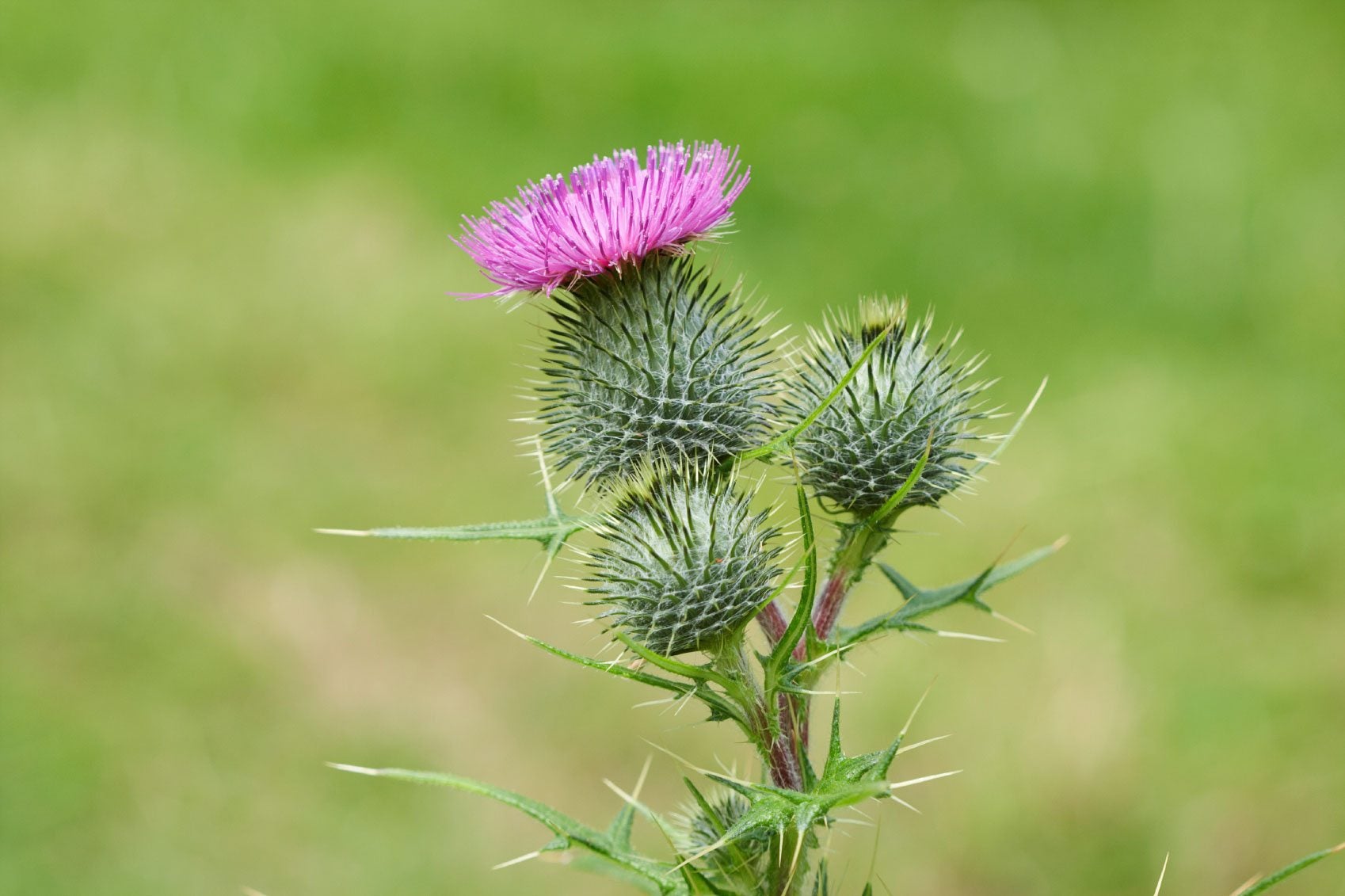Bull Thistle Control: Managing Bull Thistle Plants In Gardens
Learn how to get rid of bull thistle, a prickly biennial that grows freely in disturbed soils, pastures, and unmanaged spaces. Prevent this prolific weed from taking over your garden.


Bull thistle (Cirsium vulgare) is related to the sunflower family but has none of the charm and beauty of those sunny-nodding flower heads. It's a prickly biennial that grows freely in disturbed soils, pastures, ditches, roadsides and unmanaged spaces.
The plant has colonized much of North America and is a pest plant in the garden and in agriculture. Bull thistle control emphasizes seed control. Learn how to get rid of bull thistle and prevent this prolific weed from taking over your garden.
What is Bull Thistle?
What is bull thistle? Bull thistle plants are native to Western Asia, North America and parts of Europe.
It's a free-seeding weed with a prickly demeanor and rapid spread. The plant has the ability to produce around 5,000 seeds in a season. These bur-like seeds cling to animals, pant legs, and machinery, and get spread around with abandon. For this reason, bull thistle removal is a priority among farmers and meticulous gardeners.
Bull thistle starts life as a spiny-leaved rosette. The hairy, prickly leaves overwinter to develop stems and branches of up to 2 feet (61 cm) in spring. It has a deep taproot, which makes manual pulling a challenge.
In summer the plant grows a scented flower that resembles a spiny globe topped with fringed pink petals. The flowers are produced at the ends of the tangled stem growth and last for several weeks before producing tiny striped seeds capped with white downy hairs. These attach themselves to any object that brushes against them.
How to Get Rid of Bull Thistle Manually
This stubborn plant can arise like Lazarus from the ashes if hand pulling leaves behind any of the root. Casual removal with this method is likely to leave behind the genesis of a new plant in spite of the foliar amputation.
Gardening tips, videos, info and more delivered right to your inbox!
Sign up for the Gardening Know How newsletter today and receive a free copy of our e-book "How to Grow Delicious Tomatoes".
Digging the plant out with a spade or hori hori is the best approach to mechanical bull thistle control. Take care to remove the entire fleshy taproot for best results.
To reduce the seed population, cut off the seed head and tuck it into a sack to keep the fluffy seeds from dispersing.
Other Types of Bull Thistle Removal
In agricultural situations, the introduction of a bull thistle seed head gall fly has been proposed as a biological agent. However, it has been shown to have limited effectiveness. There is also a weevil that is an effective control agent, but it can also affect desired thistle species.
Consult with your local university extension agency for information on how to safely and organically remove large areas containing this weed. For widespread control, mowing twice per year has been effective in reducing the population by preventing seed heads. Of course, your battle with the plant will only be as effective as your neighbors' because of the travel ability of the downy seeds.

Bonnie Grant is a professional landscaper with a Certification in Urban Gardening. She has been gardening and writing for 15 years. A former professional chef, she has a passion for edible landscaping.
-
 5 Tough Urban Trees That Thrive In Cities – Top Picks For Urban & Suburban Landscapes
5 Tough Urban Trees That Thrive In Cities – Top Picks For Urban & Suburban LandscapesExplore the best urban trees that will add value to even the most challenging of landscapes. Get growing with these ideas and enjoy all the benefits of trees.
By Teo Spengler
-
 7 New & Improved Cultivars Of Old-Fashioned Plants – These Aren’t Your Grandma’s Plants!
7 New & Improved Cultivars Of Old-Fashioned Plants – These Aren’t Your Grandma’s Plants!Old is new again! These old-fashioned plants have new cultivars that are sure to thrive in your garden and bring the charm factor. Neighbors will be envious!
By Mary Ellen Ellis